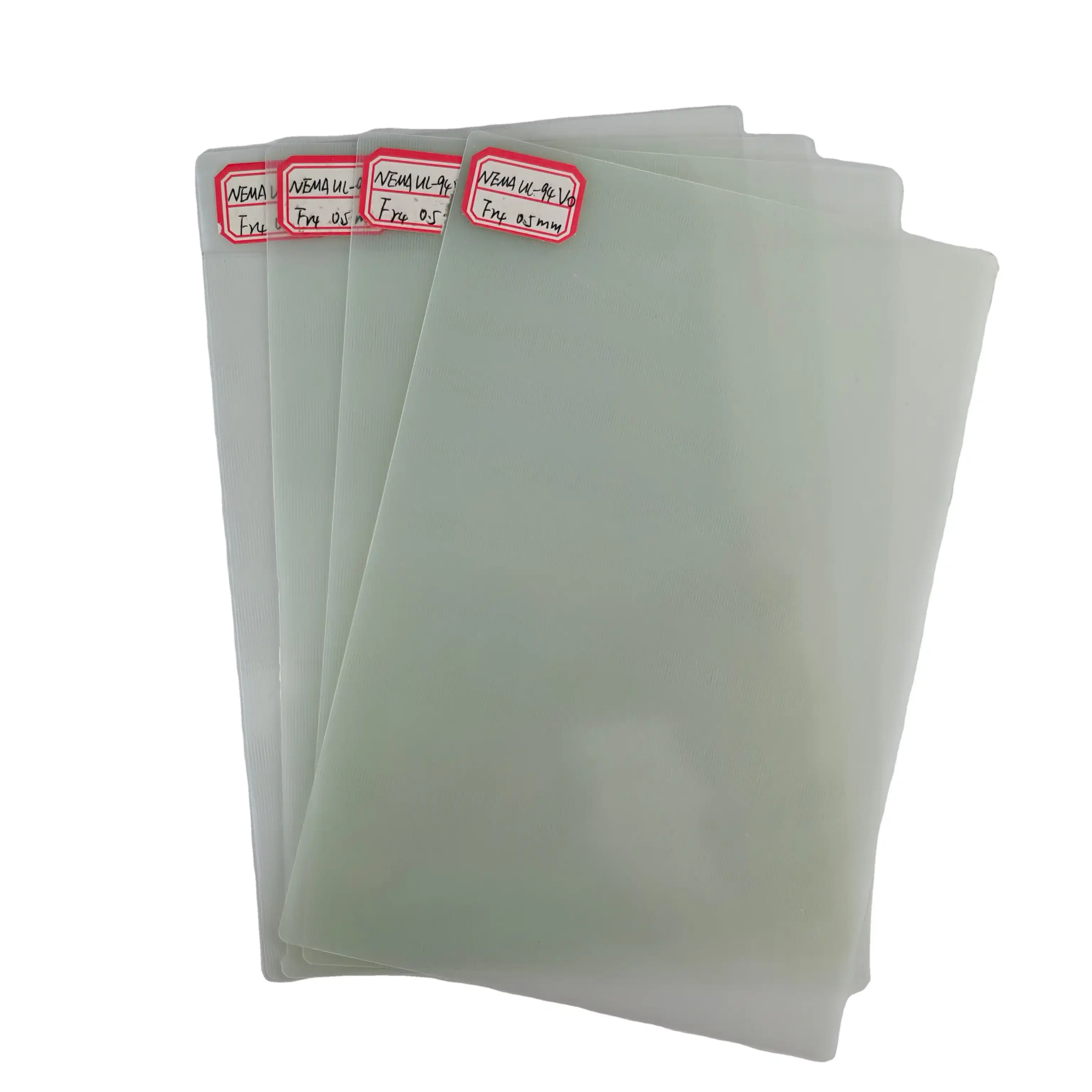Understanding UL94 V-0 Rating and Its Significance
The UL94 Flammability Test: A Comprehensive Overview
The UL94 flammability test, developed by Underwriters Laboratories, is a standardized method for assessing the fire-retardant properties of plastics and other materials. This test evaluates how materials react when exposed to small-scale ignition sources, providing crucial information about their fire safety characteristics. The test involves subjecting material samples to controlled flame exposure and observing their behavior, including ignition time, flame spread, and extinguishing properties.
Decoding the V-0 Rating: What Sets It Apart
Among the various classifications in the UL94 test, the V-0 rating stands out as the most stringent. Epoxy sheet materials achieving this rating must demonstrate superior fire-retardant properties. To earn the V-0 classification, a material must self-extinguish within 10 seconds after flame removal, show no dripping of flaming particles, and maintain a short afterglow time. This exacting standard ensures that V-0 rated materials offer the highest level of fire protection in their category.
Importance of V-0 Rating in Industrial Applications
The V-0 rating holds immense significance across numerous industries. In electronics, where component density and heat generation are increasing, V-0 rated materials provide a crucial safeguard against potential fire hazards. Aerospace and automotive sectors rely on these materials to enhance passenger safety and comply with stringent regulations. Building and construction industries utilize V-0 rated materials to improve overall fire safety in structures. The widespread adoption of V-0 rated materials underscores their pivotal role in mitigating fire risks and ensuring public safety.
Composition and Manufacturing of UL94 V-0 Rated Epoxy Sheets
Key Components of Fire-Retardant Epoxy Formulations
The exceptional fire-retardant properties of UL94 V-0 rated epoxy sheets stem from their carefully engineered composition. These sheets typically incorporate a blend of epoxy resins, hardeners, and specialized fire-retardant additives. Common fire-retardant additives include halogenated compounds, phosphorus-based materials, and inorganic fillers such as aluminum hydroxide or magnesium hydroxide. These additives work synergistically to inhibit combustion, reduce heat release, and promote char formation, thereby enhancing the overall fire resistance of the epoxy sheet.
Advanced Manufacturing Techniques for Fire-Retardant Epoxy Sheets
The production of UL94 V-0 rated epoxy sheets involves sophisticated manufacturing processes to ensure uniform distribution of fire-retardant additives and optimal performance. Advanced techniques such as reactive extrusion and in-situ polymerization are employed to achieve a homogeneous blend of components. Precise control over curing conditions, including temperature and pressure, is crucial for developing the desired fire-retardant properties. Some manufacturers utilize nano-scale additives or surface treatments to further enhance fire resistance without compromising the mechanical properties of the epoxy sheet.
Quality Control Measures in Fire-Retardant Epoxy Sheet Production
Rigorous quality control is essential in the manufacturing of UL94 V-0 rated epoxy sheets to ensure consistent fire-retardant performance. Manufacturers implement comprehensive testing protocols, including thermal analysis, flame spread tests, and smoke density measurements. Advanced analytical techniques such as thermogravimetric analysis (TGA) and cone calorimetry are utilized to evaluate the fire behavior of the materials. Continuous monitoring and adjustment of production parameters help maintain the high standards required for V-0 classification, ensuring that each batch of epoxy sheets meets or exceeds the stringent UL94 V-0 requirements.
Applications and Benefits of UL94 V-0 Rated Epoxy Sheets
Diverse Industrial Applications of Fire-Retardant Epoxy Sheets
UL94 V-0 rated epoxy sheets find extensive use across a wide range of industries due to their superior fire-retardant properties. In the electronics sector, these sheets serve as insulating materials in printed circuit boards, encapsulants for sensitive components, and protective layers in high-power devices. Aerospace and automotive industries utilize them in interior panels, structural components, and electrical systems to enhance safety and meet regulatory requirements. The construction industry incorporates these sheets in building materials, electrical enclosures, and insulation systems to improve overall fire safety in structures.
Advantages Beyond Fire Retardancy: Multifaceted Benefits
While fire retardancy is the primary attribute of UL94 V-0 rated epoxy sheets, they offer numerous additional benefits that make them invaluable in various applications. These sheets exhibit excellent electrical insulation properties, crucial for preventing short circuits and ensuring the reliability of electronic systems. Their high mechanical strength and dimensional stability contribute to the structural integrity of components, even under challenging environmental conditions. Moreover, many V-0 rated epoxy formulations demonstrate good chemical resistance, making them suitable for use in corrosive environments or applications involving exposure to harsh chemicals.
Cost-Effectiveness and Long-Term Value of Fire-Retardant Epoxy Sheets
Investing in UL94 V-0 rated epoxy sheets often proves to be a cost-effective decision in the long run. While the initial cost may be higher compared to standard epoxy materials, the enhanced safety and durability they provide can lead to significant savings over time. By reducing the risk of fire-related damage and improving the overall safety of products and structures, these sheets can help minimize potential liabilities and insurance costs. Furthermore, their durability and resistance to degradation contribute to extended product lifespans, reducing the need for frequent replacements and maintenance, ultimately resulting in lower total cost of ownership.
Conclusion
UL94 V-0 rated epoxy sheets represent a pinnacle in fire-retardant material technology, offering unparalleled protection against fire hazards across various industries. Their ability to self-extinguish rapidly, coupled with excellent electrical and mechanical properties, makes them an indispensable component in applications where safety is paramount. As industries continue to evolve and safety standards become increasingly stringent, the demand for these advanced materials is likely to grow. The ongoing research and development in this field promise even more innovative and effective fire-retardant solutions, further enhancing the safety and reliability of products and structures in the future.
Contact Us
For more information about our UL94 V-0 rated epoxy sheets and how they can benefit your specific application, please don't hesitate to reach out to our team of experts. Contact us at info@jhd-material.com to discuss your requirements and explore our range of high-performance insulating materials.






